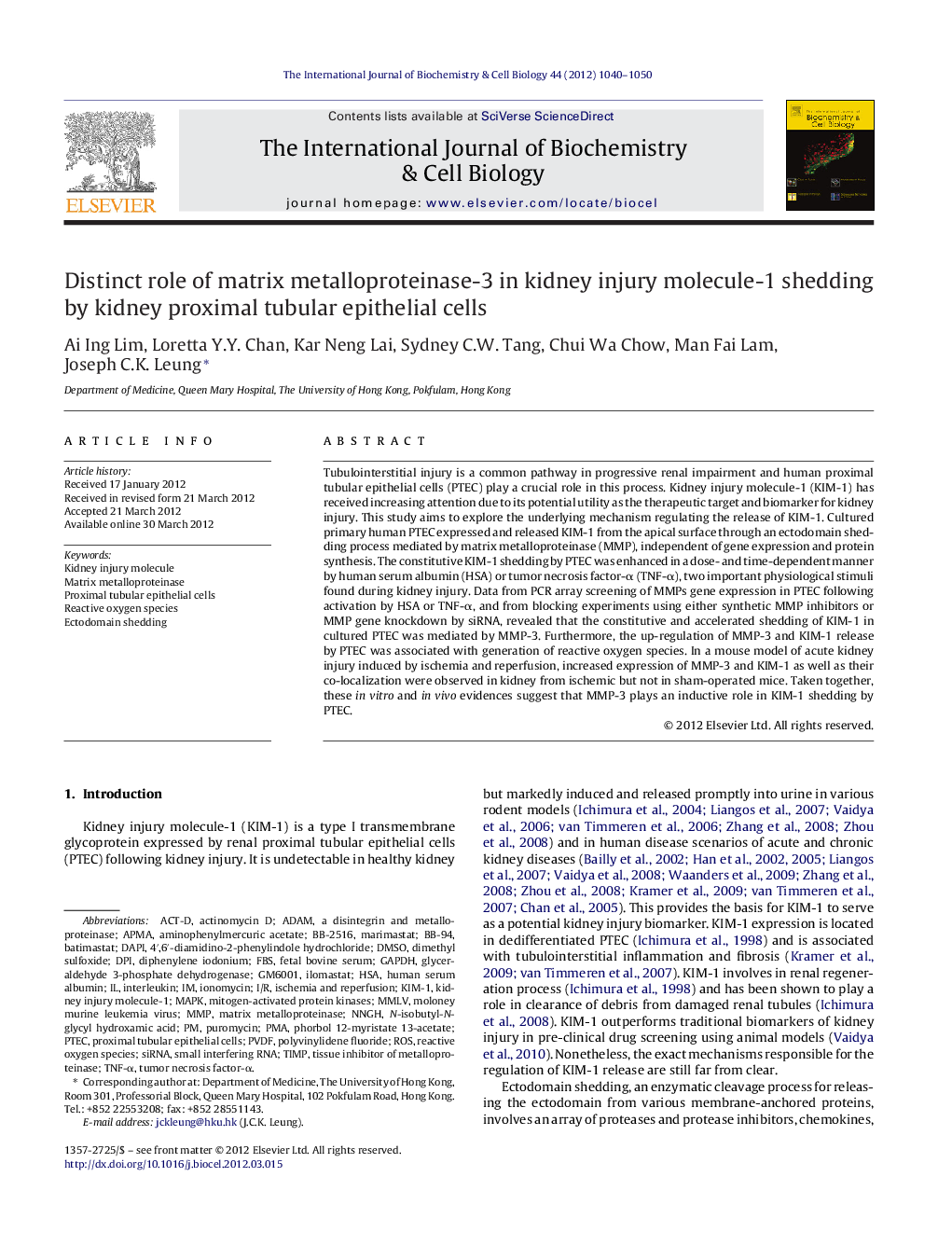| Article ID | Journal | Published Year | Pages | File Type |
|---|---|---|---|---|
| 1984007 | The International Journal of Biochemistry & Cell Biology | 2012 | 11 Pages |
Tubulointerstitial injury is a common pathway in progressive renal impairment and human proximal tubular epithelial cells (PTEC) play a crucial role in this process. Kidney injury molecule-1 (KIM-1) has received increasing attention due to its potential utility as the therapeutic target and biomarker for kidney injury. This study aims to explore the underlying mechanism regulating the release of KIM-1. Cultured primary human PTEC expressed and released KIM-1 from the apical surface through an ectodomain shedding process mediated by matrix metalloproteinase (MMP), independent of gene expression and protein synthesis. The constitutive KIM-1 shedding by PTEC was enhanced in a dose- and time-dependent manner by human serum albumin (HSA) or tumor necrosis factor-α (TNF-α), two important physiological stimuli found during kidney injury. Data from PCR array screening of MMPs gene expression in PTEC following activation by HSA or TNF-α, and from blocking experiments using either synthetic MMP inhibitors or MMP gene knockdown by siRNA, revealed that the constitutive and accelerated shedding of KIM-1 in cultured PTEC was mediated by MMP-3. Furthermore, the up-regulation of MMP-3 and KIM-1 release by PTEC was associated with generation of reactive oxygen species. In a mouse model of acute kidney injury induced by ischemia and reperfusion, increased expression of MMP-3 and KIM-1 as well as their co-localization were observed in kidney from ischemic but not in sham-operated mice. Taken together, these in vitro and in vivo evidences suggest that MMP-3 plays an inductive role in KIM-1 shedding by PTEC.
